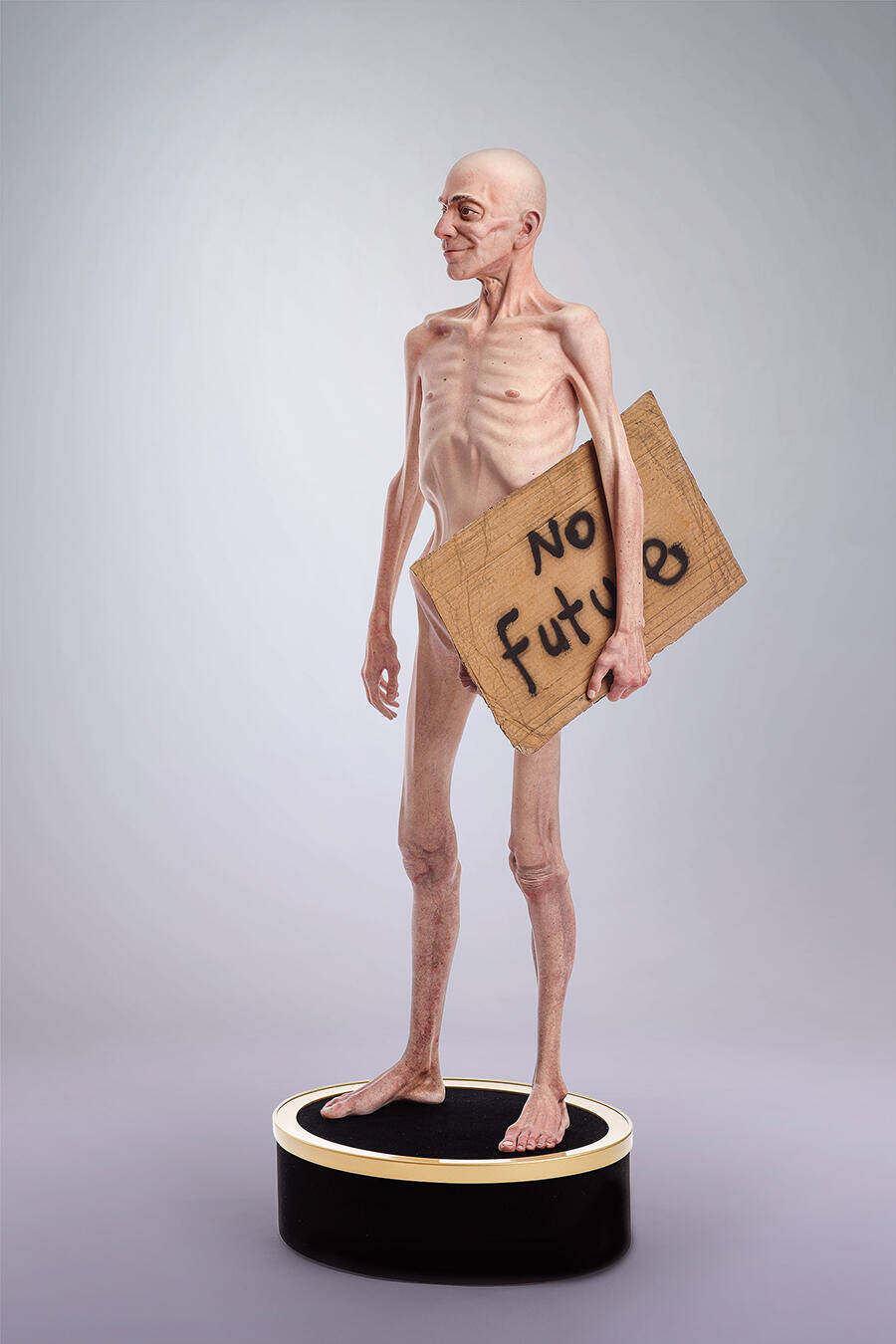Title: Ascetic
Medium: Sculpture
Material: eco-plastic, polyester, acrylic
Size: 140/55,1 x 50/19,7 x 40/15,7 cm/in
Year: 2020
Collection: Turbofolk

Unveiling Naked Truths
The sculpture Ascetic stands in stark contrast to the collection’s counterpart, the statue titled His Holiness. Serving as a satirical embodiment of a man who possesses everything yet stands exposed, Ascetic presents a gaunt figure standing naked, holding a cardboard sign with “No future” on one side and “I will work for free” on the other. The figure is elevated on a black velvet pedestal adorned with a golden trim. The interplay of the golden trim, black color, and the figure’s appearance alludes to the wealthiest individual of its time. While the wealthiest person in the world can acquire everything, there is a possibility that nothing will satisfy them because physical possessions no longer bring joy. The emaciated figure and the title Ascetic, along with the slogans on the cardboard, prompt contemplation on the true meaning of happiness and contentment arising from absolute asceticism.
Challenging Notions of Bliss
Delving into the theoretical dimension of Ascetic, the sculpture serves as a catalyst for reflection on the essence of genuine happiness and the pursuit of bliss through absolute asceticism. What constitutes the highest bliss, and what path leads to it? Is it liberation from worldly life, or is it the mastery of the system and its immediate pleasures? Is the lifestyle of “here and now” a path to goodness, or is it more an inheritance of past experiences that genuinely propel us forward? Do values need a price, or do we only value things when they have worth?
Redefining Values
In summary, Ascetic invites viewers to ponder the profound questions surrounding authentic happiness and fulfillment, urging them to reevaluate societal values and the pursuit of material wealth. The sculpture challenges preconceived notions about the path to contentment, encouraging a nuanced exploration of the intricate relationship between materialism, asceticism, and the ultimate quest for bliss.
What is the supreme bliss and what path leads to it? Is it liberation from a worldly life or mastery of the system and its immediate pleasures? Is the “right here, right now” style of living the way for good or rather a legacy of past experiences that truly pushes forward? Do the values need prices, or do we treasure things as valuable only when they have a price? What if matter and spirit don’t live in an “either-or” relationship?